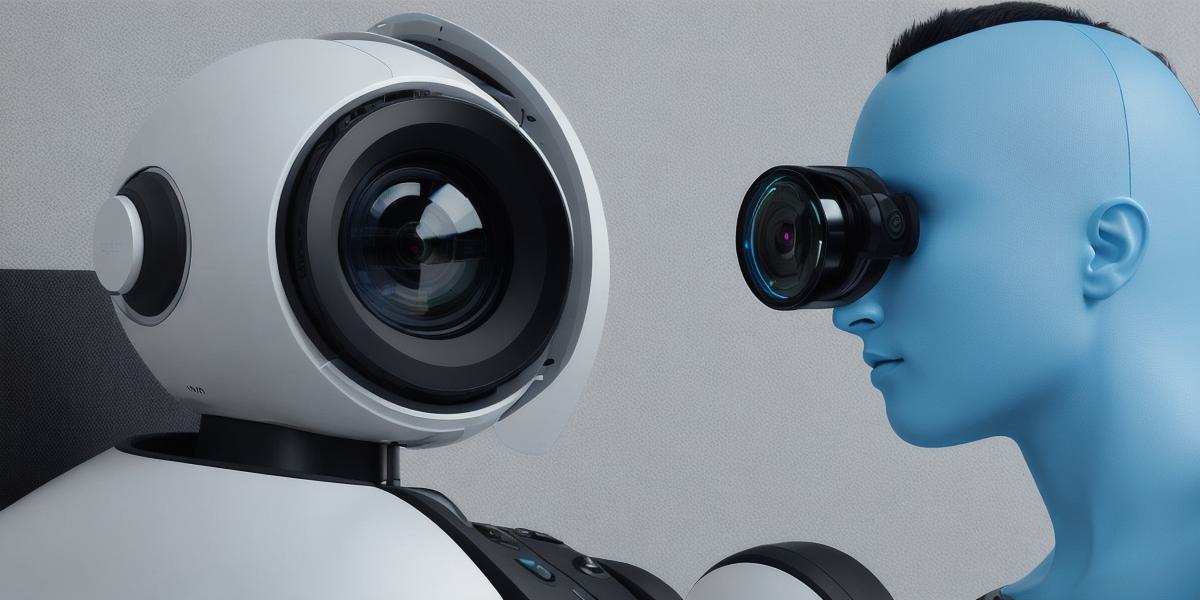Assistive Devices: Revolutionizing Accessibility in AI Development

The world is rapidly changing, and with it, our expectations for technology. We now expect seamless integration of cutting-edge tools and devices into our daily lives, making everyday tasks easier and more efficient. One of the areas where this has been particularly evident is in the development of assistive devices designed to enhance accessibility for individuals with disabilities or those facing challenges in their daily lives.
In this article, we will explore the various types of assistive devices available in the AI world, delving into their capabilities and potential benefits. We’ll also examine case studies and personal experiences that showcase how these technologies are being used to revolutionize accessibility and improve overall user experience.
1. Voice Assistants
Voice assistants are a type of AI-powered device that enables users to interact with technology using voice commands. They have become increasingly popular in recent years, thanks in part to the widespread use of smartphones and other mobile devices. Voice assistants can perform a range of tasks, including setting reminders, playing music, controlling smart home devices, and much more.
One of the most well-known examples of voice assistants is Siri, which was introduced by Apple in 2011. Siri has since become an integral part of the iOS operating system, enabling users to interact with their devices using natural language. Another popular voice assistant is Amazon’s Alexa, which is used to control smart home devices and perform a range of other tasks.
Voice assistants have the potential to improve accessibility for individuals with disabilities by providing an alternative means of interaction. For example, individuals with vision or mobility impairments can use voice commands to interact with their devices without needing to physically touch them.
2. Text-to-Speech Devices
Text-to-speech (TTS) devices are another type of assistive device that can enhance accessibility in AI development. These devices convert written text into spoken words, making it easier for individuals with visual impairments to access information and content.
One example of a TTS device is the Orbit Reader 20, which was developed by Orbit Research. The Orbit Reader 20 is designed specifically for individuals with low vision or blindness and can be used to read printed material, such as books, newspapers, and magazines. The device also features a built-in camera that can scan documents and convert them into text, making it easier for users to access information on the go.
TTS devices have the potential to revolutionize accessibility in AI development by enabling individuals with disabilities to access information and content that was previously inaccessible to them.
3. Speech-to-Text Devices
Speech-to-text (STT) devices are similar to TTS devices but work in the opposite direction. STT devices convert spoken words into written text, making it easier for individuals with dyslexia or other reading disabilities to access information and content.
One example of an STT device is Dragon Naturally Speaking, which was developed by Nuance Communications. Dragon Naturally Speaking enables users to dictate text using their voice and then converts it into written text on a computer or mobile device. The software also includes features that can help users improve their typing speed and accuracy over time.
STT devices have the potential to enhance accessibility in AI development by enabling individuals with disabilities to access information and content more efficiently and effectively.
4. Eye Tracking Devices
Eye tracking devices are another type of assistive device that can enhance accessibility in AI development. These devices track the movement of a user’s eyes and use that information to control a computer or other device.
One example of an eye tracking device is Tobii, which was developed by Tobii Communications. Tobii enables users with disabilities, such as ALS or cerebral palsy, to control their devices using only their eyes. The device can be used to access information and content, control a computer, and even play games.
Eye tracking devices have the potential to revolutionize accessibility in AI development by enabling individuals with disabilities to interact with technology in ways that were previously impossible.








